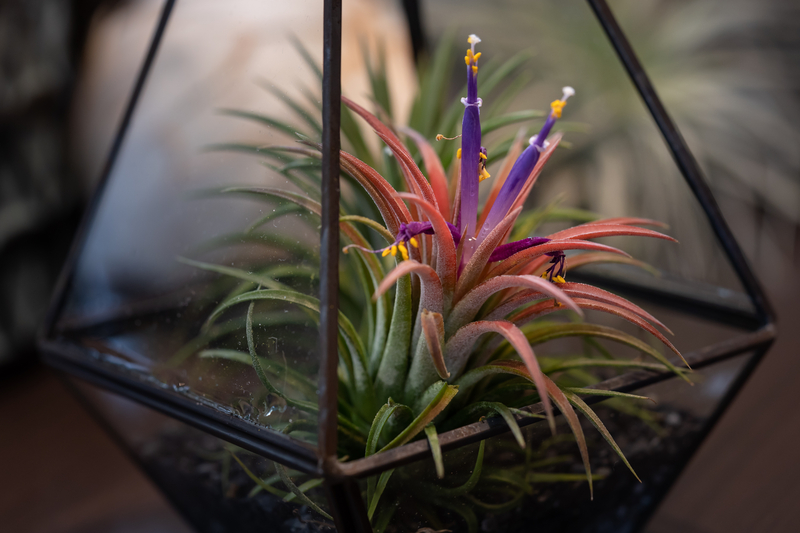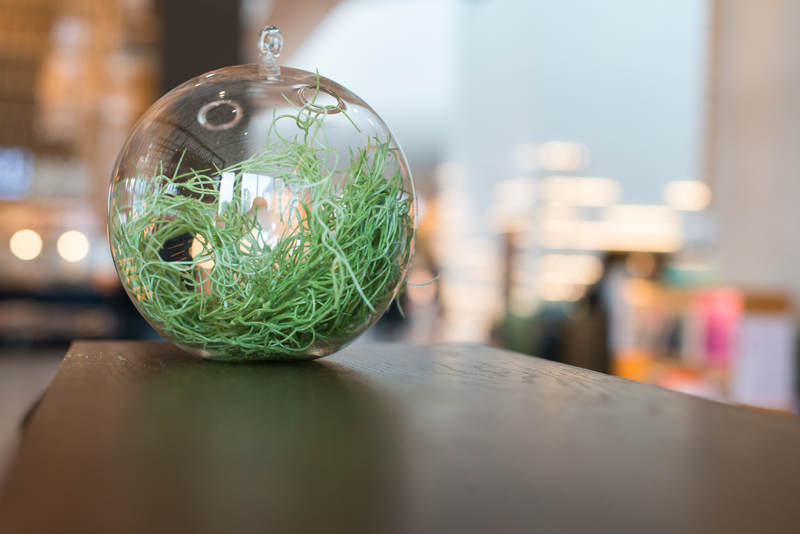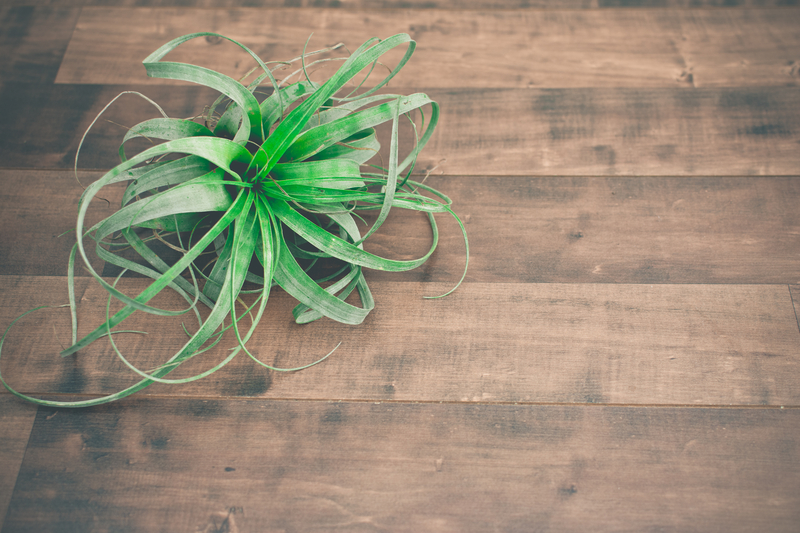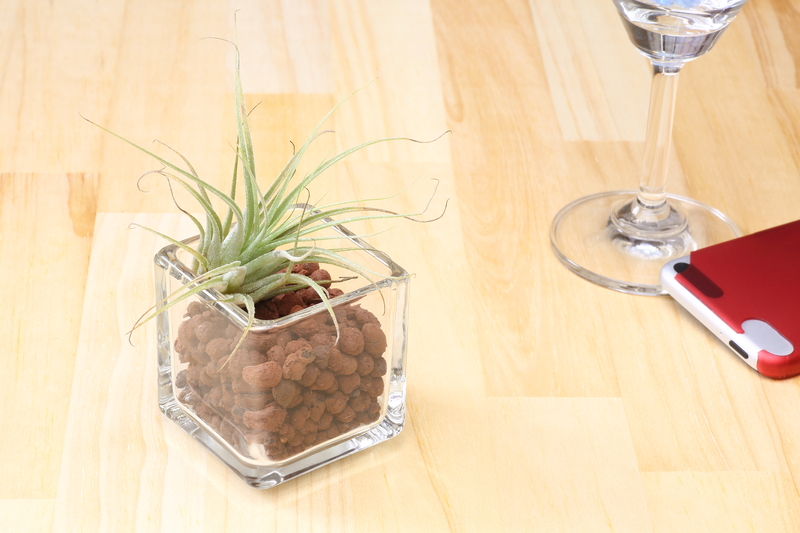Air plants are unique and interesting houseplants. They do not need to be planted in soil to grow, and they get their nutrients from the air.
Since air plants can get their nutrients from the air, many people assume that they don’t have to do anything to keep their air plants alive indoors. Air plants can be pretty low maintenance, but there are some things you should do to help your air plant thrive inside as a great indoor plant. Keep on reading for my best air plant care tips.
Other Names
- Tillandsia Ionantha
- Tillandsia Xerographica
What is an Epiphyte?
Some people might think that air plants are succulents, but this type of plant is called an epiphyte. Orchids are another popular type of epiphyte.
Epiphytes do not need soil to grow. Instead, they grow on a host, such as a tree or cactus. They do not harm the host because they take their nutrients from the air. Little things on their leaves called trichomes capture the nutrients and moisture from the air and provide the plant with everything they need to grow and thrive.
What Soil Works Best for Air Plants?
Air plants do not require soil. They can be placed or hung almost anywhere. Since they don’t need soil, this opens up many possibilities for displaying your air plant.
They are often sold in artistic terrariums or set into driftwood, seashells, or ornaments. This makes them a super cool plant that can add a lot of visual interest to any space. And they’re perfect for houseplant fanatics like me for when we run out of counter space or floor space to display more plants!
How Much Sun Does an Air Plant Need?
Air plants enjoy bright, indirect light. They should get about 4–6 hours of light every day. Any bright light will do, as they can do well with both sunlight or artificial light. That means you can place your air plant almost anywhere in your home. Rooms with southern-facing windows or eastern-facing windows will do best because those rooms will have the most light throughout the day.
Just avoid placing your air plant in an area with direct light, such as right in front of a bright window that gets a lot of direct sunlight or directly under a bright lamp. Too much direct sun or light can cause the plant to dry out and the tips of the plant to burn, shrivel, and turn brown.
Air plants in dark rooms without enough light will become dull, lose color, and potentially become sick. If you must keep your air plant in a low-light environment, such as a windowless office, try to periodically move your plant out to an area with another light source so that it can get some sunlight.
What Temperature Works Best for Air Plants?
Air plants are native to hot tropical climates across the Southern United States, Mexico, and Central and South America. That means they prefer warm temperatures. They thrive in temperatures ranging between 50- and 90-degrees Fahrenheit.
Do Air Plants Enjoy Humidity?
Since they’re native to tropical climates, air plants enjoy humidity. Therefore, it is a good idea to mist your air plants in between waterings, especially in drier climates or during the winter months. Misting the plant can help create a humid environment and prevent the plant from drying out too much in between waterings.
How Often Should You Water an Air Plant?
You might think that since an air plant can get moisture from the air, you don’t need to water it. That’s not true. Watering air plants is very important. You should water your air plant about every two weeks.
But Without a Pot of Soil, How Do You Water Your Air Plant?
The most reliable way to water an air plant is to dunk it in a bowl of tap water for at least 30 minutes every one to two weeks. If you live in a more humid or drier climate, you may wish to do this more or less often. Once you finish soaking the plant, remove it from the water, shake off any excess water from the leaves, and let it dry upside down on a towel before returning it to their glass terrarium or another home. Dry them in a room with good air circulation to not sit in water for too long. Sitting in water for an extended amount of time can cause the base of the plant to rot.
Fertilizing your air plant is unnecessary, but you may wish to add minimal quantities of bromeliad fertilizer to the water once per month to keep your plant strong and healthy.
What Size Does an Air Plant Grow to Typically?
Air plants grow very slowly and can live for many years. Varieties of air plants can grow anywhere from a couple of inches to several feet big. Most air plants that you buy at garden centers are mature and will not grow very much at all.
Most Common Bugs
Two of the most common bugs to cause problems with an air plant include mealybugs and scale. Mealybugs attack the leaves and leave behind a waxy cotton substance. Scale looks like tiny bumps on the underside of the leaves. Scale can cause the leaves to turn yellow and fall off.
These pests are usually attracted to rotting or dying plants. Therefore, try to avoid overwatering your air plant, don’t let it soak for too long, and let it dry out after soaking. If your air plant becomes infested with bugs, quarantine the plant and spray it with a pesticide.
Most Common Diseases
Air plants are susceptible to rot and fungus caused by overwatering. When an air plant rots, it may turn brown or black and become soft to the touch. The best ways to avoid rot and fungal growth are to prevent overwatering your air plant and let it dry out after soaking.
How Often Should You Repot Air Plants?
Air plants grow extremely slowly, do not have traditional roots, and do not grow in soil, so they don’t ever need repotting. If you wish to move your air plant to a new home, gently pick it up and move it. Check out the guide on how to correctly repot plants to learn more about this practice.
How Do You Propagate Air Plants?
One unique aspect about air plants is that they can self-replicate. The “mother plant” will put out small baby plants or “pups” that can be propagated.
You can separate the pups into their own plant or let the plant grow into a cluster. If the mother plant dies, the younger baby plant should continue to grow. As long as you give it enough water and sunlight, you can make it seem like your air plant never dies because it constantly produces new ones.
To propagate the plant, remove the pup with a clean, sharp tool. Cut the baby plant off at its base as far down as you can. It is better to cut into the mother plant a little than not to cut enough of the baby plant off.
Conclusion — How to Take Care of an Air Plant
Air plants are unique plants, and so they have special plant care instructions. The most important things are to give it enough sunlight and don’t overwater it. Remember these things, and you’ll be growing air plants like a pro!
Similar Posts:
How to Take Care of a Ficus Tree Plant
How to Take Care of a Calathea Plant
How to Take Care of a Coffee Plant
How to Take Care of a Pothos Plant





